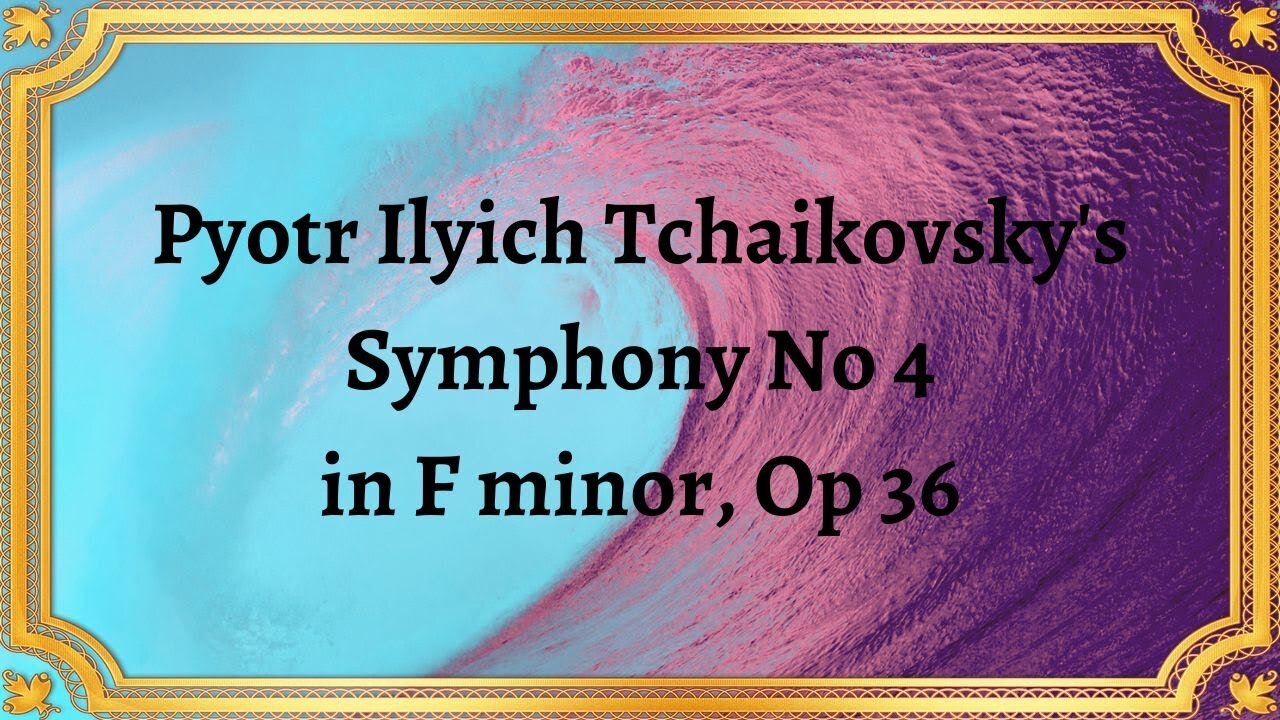Premium Only Content

Pyotr Ilyich Tchaikovsky's Symphony No 4 in F minor, Op 36
Publication date 1949
Centennial Symphony Orchestra; Serge Koussevitzky
Pyotr Ilyich Tchaikovsky's Symphony No. 4 in F minor, Op. 36, is a profound musical masterpiece that exemplifies the composer's remarkable talent for evoking intense emotions.
Composed in 1877, Tchaikovsky's Symphony No. 4 holds significant historical and personal significance for the composer. At the time of its creation, Tchaikovsky was grappling with personal turmoil and internal struggles. The symphony reflects his battle with fate, destiny, and the human experience. Tchaikovsky's composition emerged as an introspective exploration of the human condition, resonating with audiences on a profound level.
Symphony No. 4 follows the traditional structure of a symphony, consisting of four movements:
Andante sostenuto - Moderato con anima: The opening movement sets the tone with a melancholic and somber atmosphere. Tchaikovsky introduces the primary theme, representing fate, which permeates throughout the symphony. As the movement progresses, it evolves into a passionate and dramatic expression of inner turmoil, showcasing Tchaikovsky's exceptional command of orchestration and his ability to convey raw emotions.
Andantino in modo di canzona: The second movement offers a moment of respite with its lyrical and introspective character. Tchaikovsky crafts a serene and poignant melody, providing a contrast to the intensity of the previous movement. The movement unfolds like a heartfelt song, showcasing Tchaikovsky's gift for creating beautiful and expressive melodies.
Scherzo: Pizzicato ostinato - Allegro: The third movement bursts forth with energy and rhythmic vitality. Tchaikovsky employs pizzicato strings to create a playful and mesmerizing effect. The movement dances with a sense of urgency and features contrasting sections that alternate between light-heartedness and moments of tension.
Finale: Allegro con fuoco: The final movement emerges with fiery passion, driving the symphony towards its climactic conclusion. Tchaikovsky weaves together various themes from earlier movements, creating a sense of unity and resolution. The movement brims with grandeur and triumph, leaving the listener with a powerful and cathartic experience.
Tchaikovsky's Symphony No. 4 is renowned for its ability to elicit a wide range of emotions from listeners. From the opening notes, the symphony immerses audiences in a world of profound introspection, turmoil, and ultimate triumph. Tchaikovsky's masterful orchestration, evocative melodies, and dramatic contrasts resonate deeply with listeners, offering a visceral and cathartic musical experience.
Pyotr Ilyich Tchaikovsky's Symphony No. 4 in F minor, Op. 36, stands as a testament to the composer's ability to capture the human experience through music. Its historical significance, intricate musical structure, and emotional depth continue to captivate audiences today. By exploring the powerful melodies, expressive nuances, and historical context of Tchaikovsky's symphony, we gain a deeper appreciation for the brilliance of Symphony No. 4.
You have the opportunity to support the channel
https://destream.net/live/RadSiarAl/donate
-
 24:35
24:35
Classical music_Music Inspiration
19 days agoMax Bruch Violin Concerto No. 1 in G minor, Op. 26
851 -
 UPCOMING
UPCOMING
The Shannon Joy Show
1 hour ago🔥🔥BREAKING: FOIA’d Government Docs Reveal American Citizens Might Be Worth More DEAD Than Alive. Exclusive With Sasha Latypova! 🔥🔥
1384 -
 UPCOMING
UPCOMING
Trumpet Daily
11 minutes agoTrumpet Daily LIVE | Aug. 28, 2025
-

Nikko Ortiz
1 hour agoLive - Reaction Time, News, Politics, and More!
3.87K -
 1:02:26
1:02:26
VINCE
3 hours agoTragedy In Minneapolis | Episode 113 - 08/28/25
143K140 -
 LIVE
LIVE
Reidboyy
1 hour agoHow To Make $$$ in Delta Force Console Operations!
34 watching -
 LIVE
LIVE
JuicyJohns
3 hours ago $0.27 earned🟢#1 REBIRTH PLAYER 10.2+ KD🟢
40 watching -
 LIVE
LIVE
Major League Fishing
6 days agoLIVE! - Fishing Clash Team Series: Challenge Cup - Day 5
160 watching -
 LIVE
LIVE
LFA TV
4 hours agoLFA TV ALL DAY STREAM - THURSDAY 8/28/25
4,578 watching -
 LIVE
LIVE
Total Horse Channel
14 hours ago2025 URCHA Futurity | Derby & Horse Show | Thursday
78 watching